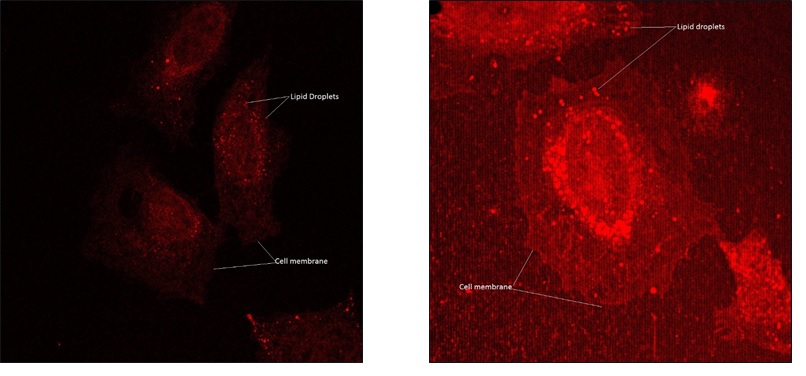Xfold slides for coherent anti-Stokes Raman scattering (CARS) microscopy imaging
- Abstract number
- 816
- Event
- European Microscopy Congress 2020
- DOI
- 10.22443/rms.emc2020.816
- Corresponding Email
- [email protected]
- Session
- LSA.1 - Label-free life science imaging
- Authors
- Dr Nagarajan Subramaniyam (2), Mr Jonas Ylönen (2), Dr Antti Isomäki (1)
- Affiliations
-
1. University of Helsinki
2. Xfold Imaging Oy
- Keywords
Surface-enhanced coherent anti-Stokes Raman scattering, two-photon excited luminescence, plasma membrane
- Abstract text
Coherent anti-Stoke’s Raman scattering (CARS) microscopy has been widely used as a label-free tool for visualizing lipids in biological samples. The major challenge in CARS microscopy is to increase the detection sensitivity to nanomolar levels or visualizing the plasma membrane. Surfaceenhanced coherent anti-Stokes Raman scattering (SECARS) has been demonstrated to increase the sensitivity using nanostructured metal surfaces1. However, the previous attempts to develop for suitable SECARS substrates resulted in broad visible two-photon excited luminescence (TPEL) due to the intrinsic emission of the metal surfaces. The TPEL signal causes a disturbing background in CARS imaging. Another challenge of the SECARS substrate is the absorption of electromagnetic energy and thermal damage of the nanostructures.
Xfold slides are designed to enhance the sensitivity of the CARS microscopy in order to visualize the cell plasma membrane. The Xfold slides provide better cell adhesion, highly uniform and reproducible imaging without any disturbing TPEL background. The Xfold slides require low laser power compared to the other plasmonic nanostructures which help to avoid the thermal damage. The Xfold slides provide a new avenue in the CARS microscopy imaging with nanomolar sensitivity for the biologists and clinicians, with potentially high impact on the healthcare industry.Figure 1: U2OS cells on glass slide (left), and on Xfold slide (right)
- References
[1] S. Nagarajan, A. Shah, C. Dreser, A. Isomaki, M. Fleischer, M. Sopanen., Applied Physics Letters (2018). 112, 233109

